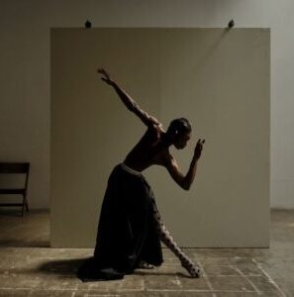D. A. N. C. E. The Deconstructed Modern Way
By Sally Blodgett
Belgium, like London, is one of those places that produce boundary-breaking artists from across a variety of creative disciplines. Think of The Belgian Six the avant-garde fashion designers who broke the mould in the 1980s. It was always more about the concept of the clothing than the final pieces; more about exposing the way the clothes were made than what the finished items looked like. Exposed is the construction of the garment which became known as deconstruction in fashion. Similarly in dance, meet Anne Teresa De Keersmaeker, the Belgian dancer and choreographer whose seminal work was shown at the Royal Opera House in London as part of the Van Cleef and Arpels dance reflections season. Find out more in D.A.N.C.E The Deconstructed Modern Way.

Fase by Anne Teresa De Keersmaeker © Anne Van Aerschot
Fase, Four Movements to the Music of Steve Reich is the breakdown of the movements very much in partnership with the score. Movements that almost explored the ideas of dance rather than the dance itself; the performance builds upon the individual pieces of the musical composition rather than just illustrating the music. It was a groundbreaking conceptual dance when it was first shown in 1982 and is considered the start of the contemporary dance movement in Flanders.
The performance, split into four acts, three duets and one solo, uses the music as a structure to develop independent movements. The movement was robotic in places, like mechanized machinery. In other places, two dancers echoed each other’s steps and movements that were repetitive whilst, without even noticing, one would move slightly out of step with the other and then back in sync.
A reference to the music concept of shifting phases and fractional movement in repetitiveness from Steve Reich, the movements, so mesmerizing and hypnotic, that all the viewer could do was be drawn more and more into the world in front of them. Almost like being pulled into a small screen TV; to really concentrate and engage in the performance.
Lighting in the four acts highlighted both single dancers’ shadows as well as the shadows of the two meeting in the middle, two becoming like one.
From almost tortured classic ballet steps that morphed into walking movement highlighted where tradition and modernity meet. A visceral set of experiences made by each of the two dancers on stage; both soft and sharp. The shifting through different movements creates a complex experience of changing forms and patterns.
Below is the performance, shortened to two and a half minutes, to give you a peek into what Fase looks like on stage.
Fase focuses on the relationship between music and dance by showing the deconstruction of dance and the deconstruction of music. The music wasn’t made for the dance and the dance wasn’t made for the music but they work together to create an experience that takes performance art to a new dimension.
A performance so hypnotic, physical, emotive, and challenging, it is rare to see this piece of work and it is so important that brands like Van Cleef and Arples support these transformative mediums of art and keep them alive for new audiences.
Check out Van Cleef and Arpels’ London Festival of Dance Reflections here.
If you enjoyed reading D. A. N. C. E., read about more fascinating displays of art here and here.
.Cent magazine London Be Inspired; Get Involved





